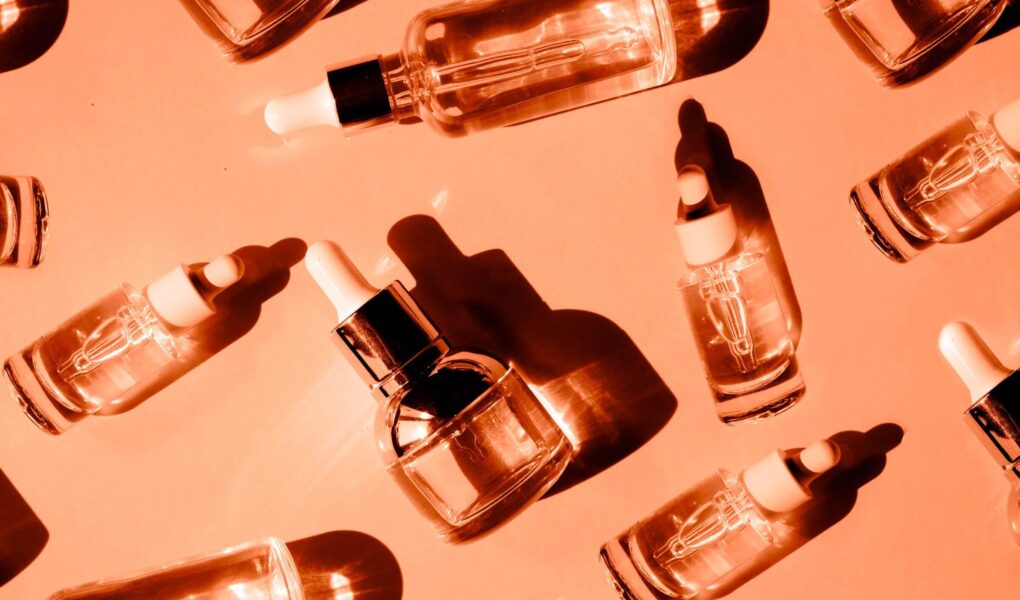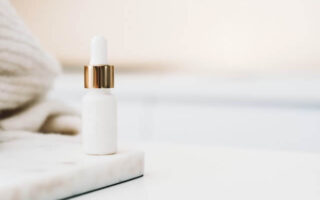Glycolic acid and retinol are two powerhouse ingredients in skincare that have been known to work wonders on various skin concerns, such as fine lines, wrinkles, dull skin, acne-prone skin, and hyperpigmentation.
However, combining them may seem overwhelming, as they both have potent effects on the skin. So, in this article, we’ll explore whether you can use glycolic acid with retinol, its benefits, and the possible side effects.
Let’s begin;
What is Glycolic Acid?
Glycolic acid is an alpha-hydroxy acid (AHA) derived from sugar cane. It’s a water-soluble acid that penetrates the skin deeply, making it an excellent exfoliant. The main proponent of glycolic acid is that glycolic acid slough off dead skin cells and promotes collagen production. This, in turn, helps reduce the appearance of wrinkles and fine lines. Plus, it helps repair sun damage and improve skin texture and skin tone.
What is Retinol?
Retinol, on the other hand, is a derivative of vitamin A. It works by increasing skin cell turnover, making it an effective skin care ingredient for improving your skin texture and reducing wrinkles appearance. It also stimulates the production of collagen, which helps plump up the skin and reduce the appearance of fine lines. Retinol is also known to help repair sun damage and reduce hyperpigmentation.
Now, coming to the main point;
Can I Use Glycolic Acid with Retinol?
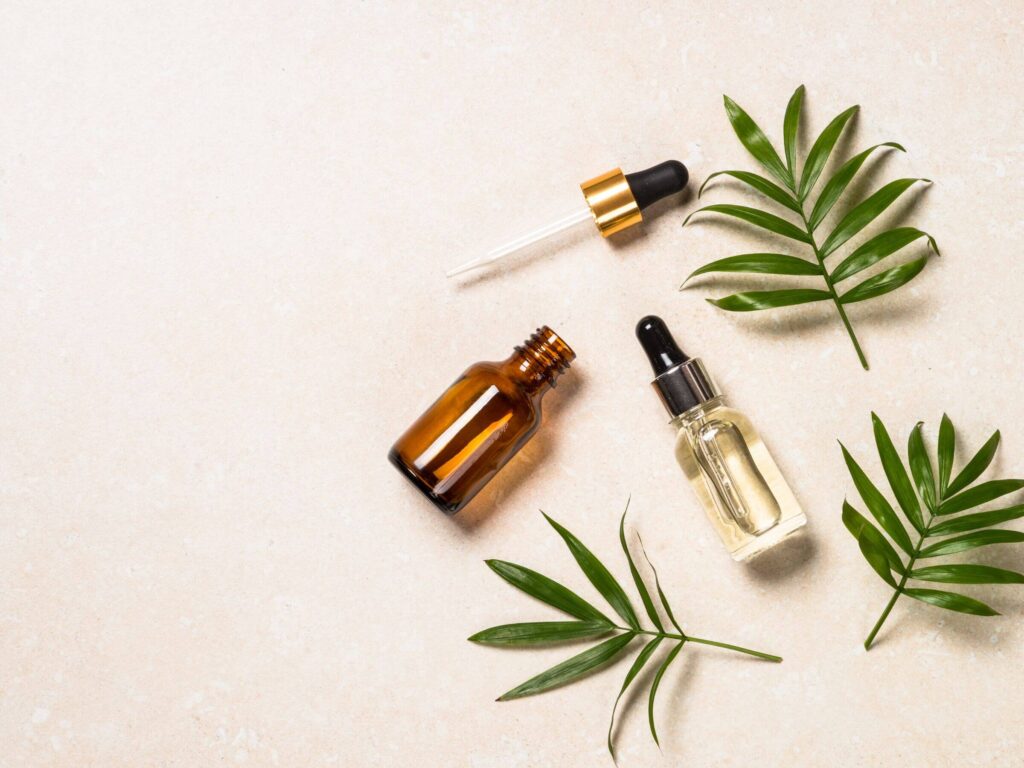
Yes, you can use glycolic acid with retinol, but I recommend you use these skincare products at different times of the day. Use glycolic acid in the morning and retinol serum at night to avoid over-exfoliation and sensitivity to the sun. I urge you to never use them at the same time.
If you’re new to using glycolic acid and retinol, it’s best to start with a lower concentration and slowly build up to higher concentrations. Ensure to monitor your skin for any adverse reactions and adjust your routine accordingly. It’s always best to approach your dermatologist for advice in case of any confusion.
One crucial point, always use broad-spectrum sunscreen during the day after applying these skin care products. It helps protect your skin from harmful UV rays.
What is the Difference Between Glycolic Acid and Retinol?
Glycolic acid and retinol are two popular skincare ingredients that offer a range of benefits for the skin. However, there are some key differences between the two:
Chemical Composition:
As I mentioned above, Glycolic acid is an alpha-hydroxy acid (AHA) that is derived from sugarcane. It’s a water-soluble acid. Retinol, on the other hand, is a derivative of vitamin A and is fat-soluble.
Mode of Action:
Glycolic acid exfoliates the skin improving its texture and tone by removing the dead layer of skin cells thereby revealing newer, healthier-looking skin. It also offers anti-aging benefits. Retinol, on the other hand, works on deeper layers by stimulating collagen production and increasing skin turnover. This helps to reduce the appearance of fine lines and wrinkles, as well as improve skin elasticity and firmness.
Skin Concerns:
Glycolic acid is particularly effective at treating hyperpigmentation, acne, and dull skin. Retinol is more effective at treating fine lines and wrinkles, as well as improving overall skin texture and tone.
Strength:
Glycolic acid comes in various concentrations depending on the product. Glycolic acid products ranging from 20% – 70% are available in the market. Similarly, retinol product comes in different strengths, usually ranging from 0.01% to 1%. In this context, my expert advice is you should start with a lower strength and gradually increase the concentration over time to avoid skin irritation and sensitivity.
Sensitivity:
Glycolic acid can be irritating to sensitive skin types, especially in higher concentrations. Retinol can also be irritating, especially when first starting to use it. So, it’s important to patch-test both ingredients and introduce them into your skincare routine gradually to avoid any potential irritation or sensitivity.
The Potential Side Effects of Using Glycolic Acid with Retinol
Though you can use glycolic acid with retinol, you might be concerned with its potential side effects. Since retinoic acid is a potent ingredient, the combination of glycolic acid and retinol can lead to giant skin disasters for certain individuals. So, let me point out some potential side effects to be aware of when using these two ingredients together:
Skin Irritation:
Both glycolic acid and retinol can be irritating to the skin, especially in higher concentrations. Using them together at the same time can increase the risk of irritated skin, which can manifest as redness, itching, or peeling.
Sensitivity to Sun:
Glycolic acid and retinol increase the skin’s sensitivity to the sun. It makes skin more prone to sunburns and other damage. So, it’s essential you use broad-spectrum sunscreen with an SPF of at least 30 during the day when using these ingredients.
Dryness:
Using glycolic acid and retinol together can cause skin dryness. These ingredients can strip the skin of its natural oils leading to flakiness, tightness, and discomfort.
Acne Flare-Ups:
While these serums are effective at treating acne, using them together might cause acne flare-ups and skin purging especially if the skin is sensitive or prone to breakouts. It’s also common in individuals with oily skin types.
Hyperpigmentation:
In rare cases, using glycolic acid and retinol together can cause hyperpigmentation or darkening of the skin. This is more common in people with darker skin tones.
It’s crucial to use these ingredients at the right concentration and introduce them slowly to your skincare regimen. If you experience any severe or persistent side effects, consult with a dermatologist as soon as you can.
While considering whether to use glycolic acid with retinol, it’s equally important to understand the differences between the toners and exfoliators.
Benefits of Glycolic Acid and Retinol
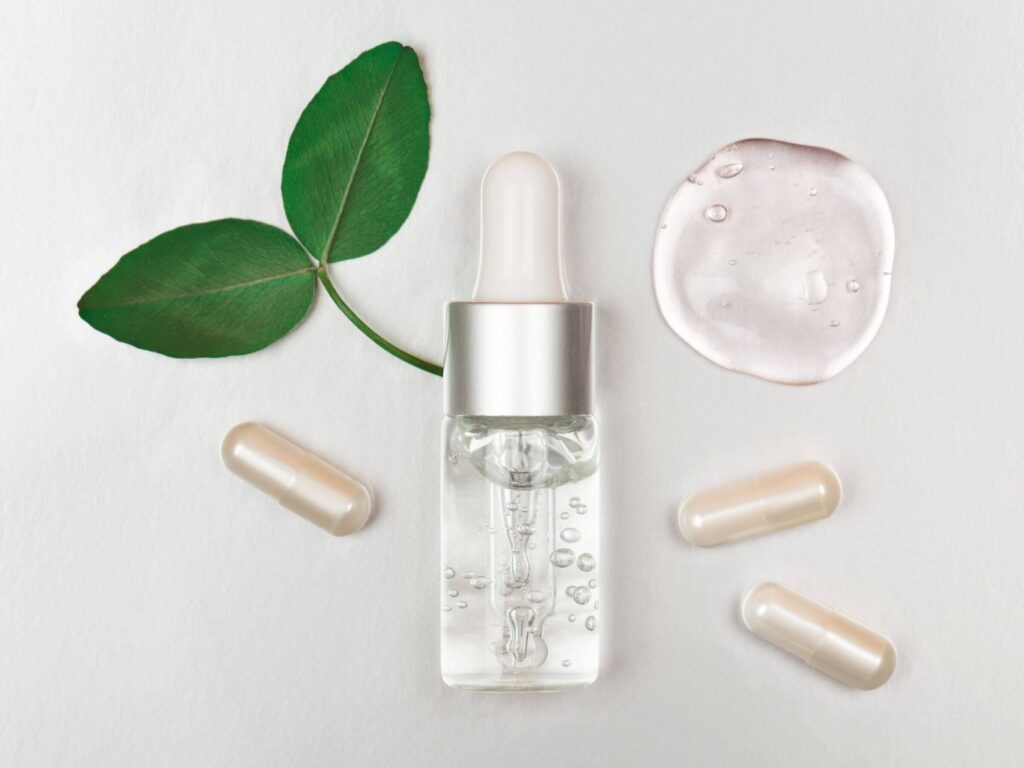
Glycolic acid and retinol are incredibly beneficial for your skin. Some of the key benefits include but are not limited to:
Exfoliation:
Glycolic acid is an alpha-hydroxy acid that helps exfoliate the skin by breaking the bonds between skin cells thereby removing dead skin cells and making skin smoother. Similarly, retinol works on a deeper level of skin and provides a boost for skin turnover, which can further improve the skin’s texture and evening skin tone.
Anti-Aging:
Both glycolic acid and retinol have impressive antiaging benefits helping you eliminate the signs of skin aging. Glycolic acid helps to reduce the appearance of fine lines and wrinkles, while retinol improves skin elasticity and firmness making them the must-have products in your anti-aging skincare routine.
Brightening:
Glycolic acid is also effective at reducing hyperpigmentation and improving skin tone, while retinol is effective in treating skin discoloration and brightening the skin by stimulating collagen production.
Acne Treatment:
Glycolic acid and retinol are both effective and excellent options for treating acne. Glycolic acid helps to unclog the clogged pores and reduce inflammation. Likewise, retinol helps to regulate oil production and prevent future breakouts leading to acne-free skin.
Enhanced Absorption:
Using glycolic acid and retinol together can actually enhance the absorption of both ingredients, making them more effective at improving the overall health and appearance of your skin texture.
Complementary Effects:
Glycolic acid and retinol work synergistically, meaning they can enhance each other’s effects when used together in your skin care routine. This can lead to more noticeable and significant improvements inspiring radiant skin appearance.
Note: Avoid using Glycolic Acid and Retinol at the same time. Instead, use Glycolic Acid in your morning skin care regimen while Retinol at night.
Who can Use Glycolic Acid and Retinol?
Almost everyone including skin care fanatics and skin care rookies can use Glycolic acid and retinol, but there are some precautions to keep in mind.
Here’s a breakdown of who can benefit from these ingredients and who should exercise caution:
People with Aging Skin:
Often considered the gold standard, glycolic acid and retinol are effective for aging and mature skin. They help reduce the appearance of fine lines and coarse wrinkles, improve skin texture and tone, and boost collagen production.
People with Hyperpigmentation:
Glycolic acid help to lighten skin discoloration aka hyperpigmentation, while retinol even out skin tone over time.
People with Acne-Prone Skin:
Retinol and glycolic acid are effective at treating acne, as they can help unclog pores, reduce inflammation, and promote cell turnover.
People with Dull or Rough Skin:
These active ingredients help to exfoliate the skin and improve overall skin texture, leaving it smoother and more radiant.
However, a certain section of individuals should exercise caution when using glycolic acid and retinol. These include:
People with Sensitive Skin:
Higher-strength glycolic acid and retinol can be irritating to sensitive and reactive skin causing more skin damage.
People with Dry or Dehydrated Skin:
Individuals with dehydrated or dry skin should be careful while using glycolic acid and retinol. These can be drying to the skin. So, ensure to follow up with a hydrating daily moisturizer to keep your skin hydrated.
Pregnant or Breastfeeding Women:
While glycolic acid and retinol are generally considered safe to use during pregnancy and breastfeeding, it’s important to consult with a healthcare provider before using any new skincare products.
People with Skin Conditions:
If you have a skin condition such as eczema or psoriasis, it’s important to consult with your dermatologist before using glycolic acid and retinol, as these ingredients can exacerbate certain skin conditions.
How Do I Know If Glycolic Acid and Retinol Is Right for Me?
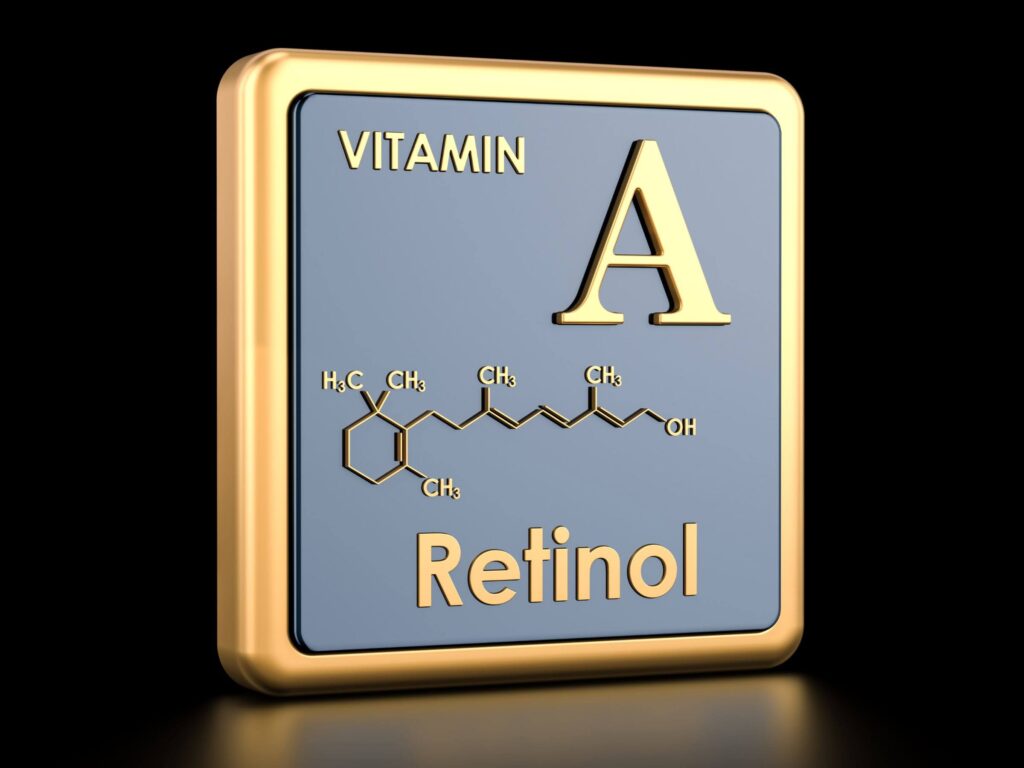
Determining if glycolic acid and retinol are right for you depends on a few factors, including your skin type, skin concerns, and skincare goals. Here are some things to consider when deciding if these ingredients are a good fit for your skin:
Skin Type:
Glycolic acid and retinol can be used on all skin types, but certain skin types are more sensitive or prone to irritation. So, if you have sensitive or easily irritated skin, you should start with a lower concentration of these ingredients and gradually build up over time.
Skin Concerns:
Glycolic acid and retinol serve specific functions and address different skin concerns. They are effective at treating a range of skin concerns, including fine lines and wrinkles, hyperpigmentation, acne, and dull skin. So, based on your need and the skin concerns that you want to address, you can select the right product.
Skin Care Goals:
If your skincare goal is to improv skin’s uneven texture and tone, reduce the appearance of fine lines and wrinkles, or address specific skin concerns, glycolic acid and retinol may be a good fit for your skincare routine.
Lifestyle:
As we discussed earlier, alpha-hydroxy acid products i.e. glycolic acid and retinol increase the skin’s sensitivity to the sun. So, if you are unable or unwilling to consistently use sunscreen during the daytime, then these products may not be a good fit for your lifestyle.
Tolerance:
Finally, it’s important to pay attention to how your skin reacts to these ingredients. If you experience severe or persistent irritation, dryness, or other side effects, these ingredients may not be right for you. It’s important to listen to your skin and adjust your skincare routine accordingly.
Note: It’s always best to consult with a skincare professional to determine if glycolic acid and retinol are right for your skin type and concerns.
How to Use Glycolic Acid and Retinol?
Since now you are familiar with both the benefits and potential side effects of using glycolic acid with retinol, it’s equally important to use them correctly to avoid irritation and other associated negative side effects. Here are some of my personal tips on how to use glycolic acid and retinol:
Start Slow:
Start slow and gradually build up to higher concentrations if you are new to these products. Begin with a low concentration or milder skin care ingredient and use it once or twice a week, then gradually increase the frequency and strength over time.
Use at Night:
These serums increase the skin’s sensitivity to the sun. So, I recommend applying retinol at night.
Use a Moisturizer:
A moisturizer is your best friend. Always use a moisturizer containing soothing ingredients like aloe vera after applying glycolic acid and retinol to help prevent dryness and irritation.
Wear Sunscreen:
As mentioned, glycolic acid and retinol make your skin more sensitive to the sun, so it’s important to wear sunscreen during the day. Look for a broad-spectrum sunscreen with an SPF of at least 30.
Avoid Physical Exfoliants:
Glycolic acid and retinol comprise the properties of chemical exfoliants. They often act as chemical exfoliators. So, you best avoid other exfoliants like scrubs or physical exfoliants. They can be too harsh on the skin when used in combination with glycolic acid and retinol.
Don’t Combine with Benzoyl Peroxide & Vitamin C:
Avoid using glycolic acid and retinol in combination with benzoyl peroxide and vitamin C, as this can cause irritation and dryness.
Have Patience:
It can take several weeks or even months to see results from using glycolic acid and retinol. So, be patient and consistent with your use to achieve the best results.
FAQs:
Can I use glycolic acid and retinol at the same time?
There’s a common misconception among people that using glycolic acid and retinol together negates each other benefits. However, it’s perfectly fine to use both products. To avoid potential skin irritation or adverse reactions, I advise you to use them at alternating times of the day or on different days of the week.
What goes first glycolic acid or retinol?
I recommend you apply glycolic acid products in your morning skincare routine. Inversely, use retinol products at night.
Can I use glycolic acid and retinol at night?
Yes, you can use glycolic acid and retinol at night. However, I advise you to use them at separate times or on alternate nights.
What should you not use glycolic acid with?
You shouldn’t combine Vitamin C products with AHAs and BHAs (glycolic acid, salicylic acid, lactic acid). The relationship between glycolic acid and Vitamin C is quite complicated. When used together, vitamin C can potentially disrupt the skin’s natural pH balance and cause damage to the skin barrier.
What not to use with retinol?
You shouldn’t mix retinol with benzoyl peroxide, vitamin C and AHA/BHA acids. Mixing them together increases skin sensitivity, dryness and irritation. Plus, vitamin C has a lower pH than retinol, which can potentially disrupt the skin’s natural pH balance and reduce the effectiveness of both ingredients.
Also, physical exfoliants, such as scrubs and brushes, can be too harsh on the skin when combined with retinol. Retinol already causes some dryness and flaking, and using physical exfoliants can exacerbate these effects.

